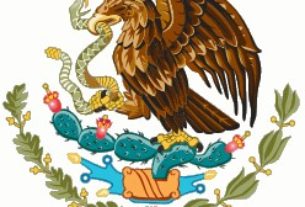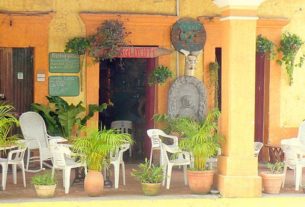The longer one lives and travels in Mexico, the more meaningless the term “Mexican food” seems to become, for the true cuisine of Mexico contains such distinct regional differences that some people claim that they can tell what part of the country they are in just by tasting the food.
This may be true, for after many happy years of tasting, testing, and learning kitchen secrets in homes, markets and restaurants in Central and Western Mexico, the Gulf and Pacific coasts, and the Yucatan, I am attuned to their individual flavors, textures and ingredients.
The cuisine of Oaxaca, however, was a tantalizing mystery waiting to be unlocked, and recently I was lucky enough to be given an enlightening introduction to the magic of la cocina oaxaqueña, the cooking of that fascinating and culturally diverse southern Mexican state known as the Land of the Seven Moles.
In the kitchen of Seasons of My Heart, chef Susana Trilling’s carefully and lovingly created Oaxacan cooking school in the central valley region of the state, learning to prepare an unforgettable meal is an all-encompassing experience, from a shopping trip to the market to that last satisfying after-dinner sip of Oaxacan coffee.
Recently, I joined Susana and four other students for a day of shopping, cooking and feasting, and brought back a few of the outstanding Oaxacan recipes that Susana has graciously agreed to share with Mexico Connect’s readers. They are the best that this region of Mexico has to offer, as attested to by the popularity of Susana’s PBS cooking series and cookbook, also called Seasons of My Heart.
The day started with a trip to the Etla market, the largest in the Etla Valley, just north of the capital city of Oaxaca. The beautiful, peaceful countryside yields an abundance of local crops, which are brought to the market along with the fresh homemade cheeses of the region, a vast array of local chiles used in making Oaxaca’s famous seven moles, and a variety of culinary and medicinal herbs.
Each of the important market towns in the central valley area has a different Día de Plaza, the main market day of the week, and our class had the good fortune to arrive at the Etla market on a Wednesday, its biggest and busiest day. Many of the market ladies greeted Susana enthusiastically, and were eager to have us taste their wares, of which they were obviously proud. My personal favorites were the cheeses, especially the sweet, moist requesón, and the breads, for which the Etla Valley is justifiably famous.
Despite all the nibbling, we were tempted by the various dishes offered for almuerzo – brunch – and stopped at one of the small market restaurants for enmoladas, entomatadas, and a drink of the wonderful, frothy Oaxacan chocolate.
After purchasing the ingredients for the day’s meal, we headed for Rancho Aurora, home to Susana, her family, and her cooking school. After having pursued her early interest in cooking, which started with the food prepared by her Mexican grandmother and continued through chef’s training and restaurant ownership and management, Susana followed her dream of having a cooking school in Mexico. Overlooking the pueblo of San Lorenzo Cacaotepec, the ranch is set on a lovely, rolling hillside, making the outdoor kitchen every bit as inviting as the spacious, well-equipped indoor kitchen. After getting acquainted with the layout of the kitchen and enjoying a selection of refreshing aguas frescas, we set to work preparing the day’s comida.
Each student was responsible for a different course, deciding among ourselves whether we preferred to be in charge of the soup, salad, rice, main dish or dessert. We were each given a copy of the recipe for the course we had chosen, followed by individual explanations and answers to our questions on techniques, especially those specific to Oaxacan cooking. Very helpful, as well as visually appealing, were the large, shallow baskets lined up on one of the kitchen counters, each of which contained the ingredients necessary for a particular dish. The grouping of fresh produce, herbs and spices in the baskets served not only as an excellent way of organizing the meal, but an aromatic inspiration to begin what was to be a rewarding effort.
As we worked on putting our comida together, checking on each other’s progress and enjoying the feeling of camaraderie that comes from cooking with other people, Susana gave us hints on blending different ingredients, and information on the origins of the dishes themselves. She explained that Oaxaca’s cuisine is made up of traditional techniques and ingredients from seven different parts of the state.
These are culinary regions within a region, such as those of Puebla, Michoacan and other states whose cooking is characterized by the subtle sophistication that is possible with food produced under a variety of growing conditions. Mountains, valleys, and coastal waters all have made distinct contributions to Oaxaca’s cuisine. The meal we prepared featured specialties from at least three of Oaxaca’s seven regions. Just as I was making a mental note to find them on a map at home, I found out that Susana is offering culinary tours of each region.
When it came time to sit down and eat, each of us serving our special course, I asked about the culinary regional tours. The first tour, to the Isthmus and coast regions, including Oaxaca’s famous southern Pacific beaches, features cooking on a coffee plantation, in a palapa on the beach, and celebrating the colorful feast of Candelaria, complete with native dress of the region. The Central Valley and Mixteca tour focuses on the food and culture of the capital city of Oaxaca, where indigenous cuisines from all over the state come together to offer unique, cosmopolitan dining, and an exploration of the ancient Mixteca region with its pre-Hispanic ingredients. Zapotec cuisine and culture, archeology sites, and classes in chocolate, cheese and bread making are only a few of the many aspects of this tour.
To order Susana’s book from Amazon.com, Click Here!
Meanwhile, enjoy some Oaxacan food at home, with the following recipes from Seasons of My Heart.
- Mexican blessed beet salad: Ensalada de betabel bendito: Blessed Beet Salad
- San Blas Atempa’s fiesta beef stew: Guisado de res de San Blas Atempa
- Stuffed Mexican crepes with sweet potato and pineapple sauce: Crepas rellanas con salsa de camote y piña


